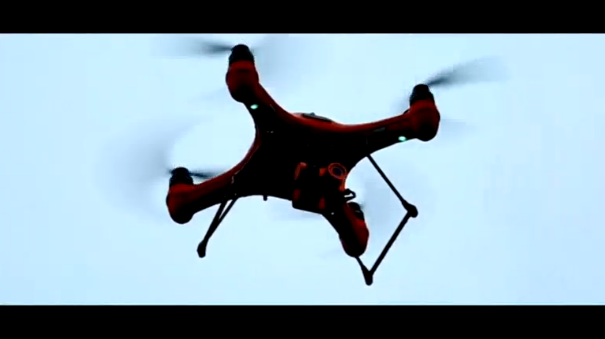

BERLIN, Germany (Reuters) — The third generation of Swellpro’s waterproof drone has gone on display at the IFA consumer technology fair in Berlin.
Swellpro says it was the first company to develop waterproof drone technology.
The idea came about when founder Eric Hu saw a drone crashing into the sea while on holiday in the Caribbean islands.
Swellpro’s technical manager for China, Anthony Kuhn, told Reuters: “It’s a stomach turning feeling when you’ve got your drone and you see this thing crash into the sea, but with Splash Drone you don’t have that. It’s gone. That’s what’s unique about this.”
Kuhn says the firm’s third model – Splash Drone 3 – is a great improvement on its precursors.
“To be able to produce a drone that can withstand salt water, it’s quite an achievement,” said Kuhn.
“The motors are brushless and they’re coated, so they can withstand salt water. We advise that once you’ve finished flying the drone you give it a rinse off.”
The Splash Drone 3 has a fast release waterproof 4K camera gimbal, a first person view (FPV) remote controller, and updated flight control system.
Swellpo has sold more than 6,000 models since its first waterproof drone went on sale in 2013.
It’s aimed at fishermen, water-sports lovers, and boat enthusiasts, among others.
“It’s a multipurpose drone that can do lots of things. From dropping fishing bait, from search and rescue operations, through to a follow-me mode, which is ideal for boat-users,” said Kuhn.
“You can get the drone to follow you while you’re on a boat or a jet ski or in a car on land.”
Kuhn said it could also be used in search-and-rescue missions.
The firm’s next version, Splash Drone 4, is currently in development.
Another drone with a difference on display at IFA was Ataraina’s prototype Flying Magic Cleaner, what it calls “the world’s first flying air cleaner.”
The Flying Magic Cleaner is designed to remove dust, pollen, and other harmful particles from inside the rooms of your home.
Generating an airflow as it flies, the cleaner collects particles that ordinary vacuum cleaners miss, say the creators.
Central to its methodology is a thin circular polymicro film attached to the top of the drone.
“We give it a voltage to make it electrostatic, so it actually attracts particles, which stick onto the surface of this sheet.”
A simple wipe with a cloth will remove unhealthy particles, allowing the film to be re-used.
“We are looking at making the drone fly automatically, so we need to include some sensors, so as it flies through the room it won’t hit children or the wall or furniture.”
IFA is the largest tech fair in Europe and ended on September 6.
